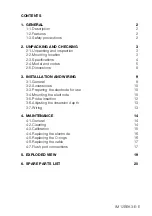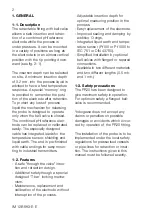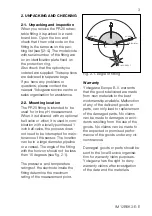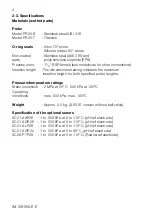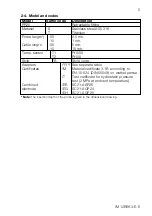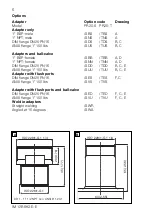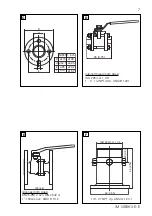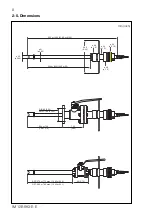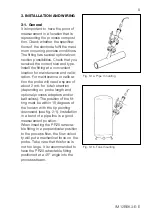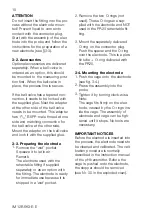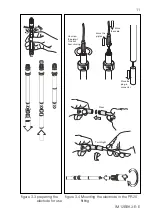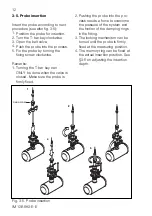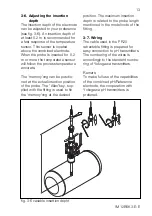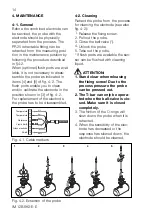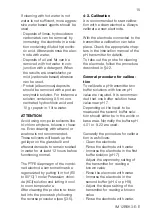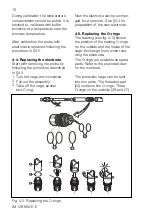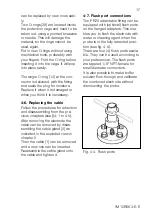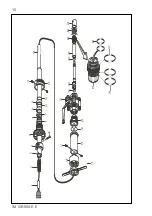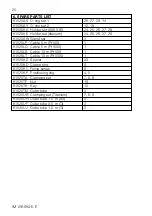
IM 12B6K3-E-E
15
If cleaning with hot water is not
water is not sufficient, more aggres-
sive water based agents should be
used.
- Deposits of limes, hydroxides or
carbonates can be removed by
immersing the electrode in a solu-
tion containing diluted hydrochlo-
ric acid. Afterwards rinse the elec-
trode with water.
- Deposits of oil and fat can be
removed with hot water in con-
junction with a detergent. When
the results are unsatisfactory a
mild (carbonate based) abrasive
can be used.
- Protein (albuminous) deposits
should be removed with a protein
enzymatic solution. For instance a
solution containing 8.5 ml con-
centrated hydrochloric acid and
10 gr pepsin in 1 litre water.
ATTENTION
Avoid using non-polar solvents like
tri-chloro ethylene, toluene or hexa-
ne. Even cleaning with ethanol or
acetone is not recommended.
These solvents will break up the
gel-layer on the glass bulb and
afterwards needs to remain soaked
in water for at least 12 hours before
functioning normal.
The PTFE diaphragm of the combi-
ned electrode can sometimes be
regenerated by putting it in hot (60
to 80°C) 1 molar Potassium chlori-
de (KCl) solution and letting it cool
to room temperature.
After cleaning the probe is re-inser-
ted into the process by following
the reverse procedure (see §3-5).
4-3. Calibration
It is recommended to start calibra-
tion with a clean electrode. Always
calibrate a new electrode.
With the electrode connected to the
transmitter a calibration can take
place. Check the appropriate chap-
ters in the instruction manual of the
pH transmitter for details.
To take out the probe for cleaning
the electrode, follow the procedure
described in §4-2.
General procedure for calibra-
tion
To calibrate a pH transmitter two
buffer solutions with known pH
value are required. It is recommen-
ded that one buffer solution has a
value near pH 7.
Depending on the liquid to be
measured the second buffer solu-
tion should either be in the acidic or
base area. Normally the buffers pH
4.01 or 9.22 are used.
Generally the procedure for calibra-
tion is as follows:
- Clean the electrode
- Rinse the electrode with water
- Immerse the electrode in the first
buffer solution (pH 7)
- Adjust the asymmetry setting of
the transmitter for reading a
known value
- Rinse the electrode with water
- Immerse the electrode in the
second buffer (pH 4 or pH 9)
- Adjust the slope setting of the
transmitter for reading a known
value
- Rinse the electrode with water.
Содержание PR20
Страница 1: ...IM 12B6K3 E E 9th Edition User Manual Model PR20 Retractable fitting for combined pH redox electrodes ...
Страница 2: ...IM 12B6K3 E E ...
Страница 20: ...IM 12B6K3 E E 18 ...
Страница 23: ...IM 12B6K3 E E 21 ...

